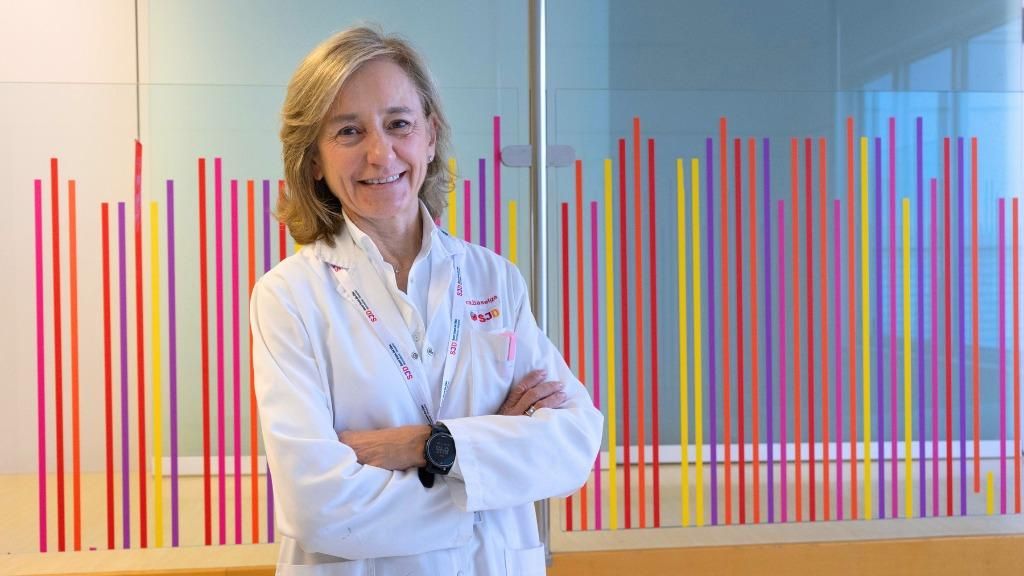
Eulàlia Baselga, Head of the Dermatology Department at the SJD Barcelona Children's Hospital, has received the award for excellence from the College of Doctors of Barcelona for her teaching work in the Faculty of Medicine and Health Sciences at the Universitat de Barcelona.
Three decades ago, Dr Eulàlia Baselga started her work in paediatric dermatology, with a special interest in vascular malformations. We sat down with her to discuss how the treatment of venous malformations has changed over the years.
How have treatment and research into vascular malformations changed over the last three decades?
It has been like night and day. When I first started out, we did not even know what caused vascular lesions, and all we did was get rid of them, whether by surgery, sclerotherapy, laser therapy, etc. But now we know they are caused by mutations in endothelial cells. They are mosaic genetic mutations, which do not affect all cells, only some, and this is based on when during embryonic development that the mutation occurred. That is what makes these diseases so complex, and what makes each case so different. Each vascular lesion manifests differently—no two are the same. Knowing that they are caused by genetic mutations is hugely important, because it has opened the door to some extremely specific treatments.
When did you start researching vascular malformations?
In a way, I've always been researching them, though perhaps not to such a formal extent as I am now. I have always been a very curious person, always asking myself about why things happen. Dermatology is a very pattern-oriented field, recognising patterns, and during my career, whenever I found overlaps between different patients, I studied them. I’ve also conducted research into new drugs to allow patients with no treatment at this point in time to take part in clinical trials. But around ten years ago I was awarded my first FIS fund, and I already had some dedicated funding behind me that I could use to push forward with this research in a more formal way.
‘Just as important as curing the disease, if not more, is delaying its progression’
Which research lines are you investigating?
Thanks to a grant from the Ramón Areces Foundation that was won by our colleague Sandra Castillo, we recently created an endothelial research laboratory to support research into vascular malformations. It has been a vital step forward. Now we can conduct genetic studies of the vascular malformations that our patients have right here in the lab, and if necessary, we can take live cell cultures to verify treatment effectiveness before administering it to the patient. Before now, we had to send our samples off to the Josep Carreras Leukaemia Research Institute for study. Now we can do it in-house.
We already have animal testing models in place and cell cultures of certain vascular malformations. This will allow us to better understand why and how they occur, and study how we can treat them.
Plus, thanks to a European grant, we are coordinating a project with 13 other European healthcare facilities, in which we are studying the natural course of these diseases. Because they are very complex rare diseases, very different from one patient to the next. Now, as well as that, we are looking into overlaps between patients in clinical situations that are similar to some extent. We hope to see whether treatments that have been effective for one of those patients will also be effective for the other.
Will these studies help change the tide for the disease? Will they help cure it?
In my opinion, just as important as curing the disease, if not more, is delaying its progression. We want children not to develop clinical symptoms of the disease because we managed to intervene before they appeared. We want these children to have a good quality of life and for it to be a normal life. And that is exactly what we're doing with current treatments.
As of yet, there is still no cure for vascular malformations. We would need some kind of gene therapy, and that's quite far off right now. These diseases are so complex.



